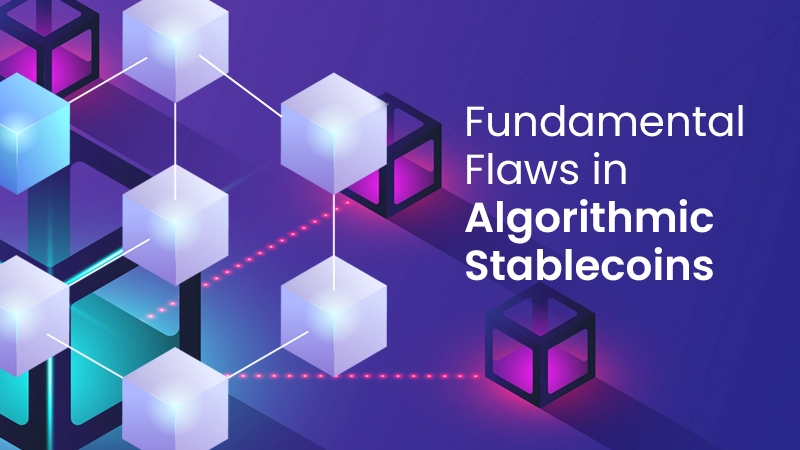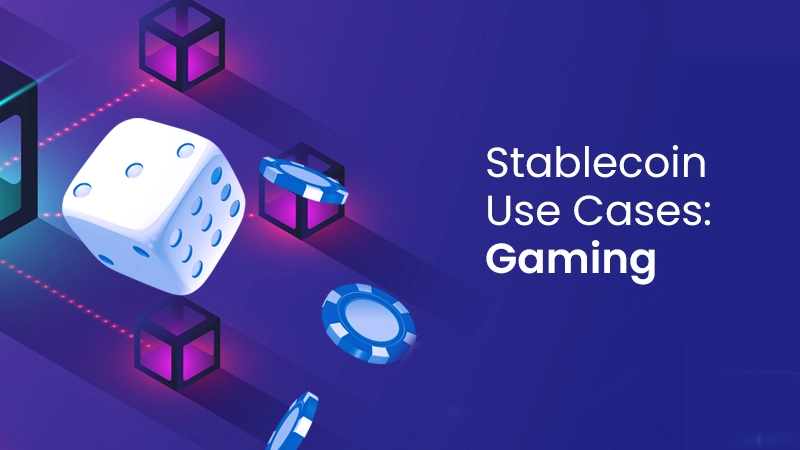Algorithmic stablecoins are the most recent creation in the area of stablecoins.
This type of stablecoin is reliant upon an algorithm that pegs itself to a physical currency. They are not fully backed by collateral but instead rely on the laws of supply and demand to maintain their 1:1 price peg.
When the demand for an algorithmic stablecoin increases and the price of the stablecoin surpasses its peg (EG $1.00), the protocol issues a fresh supply of stablecoins to reduce the price back to peg. Inversely, if the price of the stablecoin falls below $1.00 due to reduced demand, stablecoins are removed from circulation via a process called burning.
Due to being both located on the blockchain and undercollateralized, algorithmic stablecoins are both decentralised and capital efficient. However, the overarching weakness of algorithmic stablecoins lies in their (sometimes ‘lack of’) stability.
The 2022 bear market was spearheaded by TerraUSD (UST) collapsing. At its peak, it was a top 10 overall cryptocurrency and a stablecoin many people used. For a TLDR and how the ‘death spiral’ of UST began, you can read a breakdown from genesis to end here.
Examples:
Algorithmic stablecoins function as ‘central banks’, defending the peg of their currency. When the price goes over the peg, assets are bought and subsequently sold when the price drops below the peg.
Such stablecoins make it easier to gain exposure to the support commodities. You may not be able to buy a physical gold bar or a barrel of oil but you can purchase a stablecoin which is backed by it.
Examples:
Algorithmic stablecoins function as ‘central banks’, defending the peg of their currency. When the price goes over the peg, assets are bought and subsequently sold when the price drops below the peg.
Such stablecoins make it easier to gain exposure to the support commodities. You may not be able to buy a physical gold bar or a barrel of oil but you can purchase a stablecoin which is backed by it.
Pros:
- Provide exposure to underlying assets which are normally ‘out of reach’, this breaks down the barrier and allows the spread of asset ownership to increase without needing the knowledge and network to buy the asset directly
- Compared to the majority of crypto assets, they are less volatile due to being back by real world assets (RWAs)
- Less susceptible to inflation due to these RWAs being go to options in hard economic times and the tried and true method of people storing wealth in precious metals, real estate, oil and other assets in harsh times is a trend which continues here to
Cons
- The value of the assets is susceptible due to external real world events, these are variables which cannot be accounted for until the happen (Russian/Ukraine War, Oil prices falling to historical lows) so the element of a potential black swan event increases the risk of the assets, the stablecoin itself maintains the same value but the value of the asset can fluctuate and thus change the value and worth
- At times low liquidity make may liquidating these assets harder and not having the ability to liquidate them in a timely manner may cost the owners untold amounts of worth
If you want to learn more about stablecoins you can check out our full Poundtoken stablecoin guide here guide to stablecoins.




